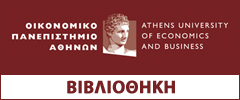| Περίληψη : | In this thesis, we develop and analyze stochastic queueing models with which we study the effect of a varying service rate policy on customer arrival rate, considering two different ways for controlling customer entrance. In the first problem, we assume that customers respond strategically to excessive delays by taking into account the trade-off between service benefit and expected delay in the presence of a service control dynamic policy employed by the system administrator. In this case, arrival rate control is implicit, since it is imposed in equilibrium in the game between potential incoming customers. The effect of the service rate policy is that the possible equilibria are generally more than one. In the second problem, we assume that the system administrator controls both customer arrival rate and the service rate employed with respect to the system congestion in a stochastic dynamic framework. More specifically, in the first part of this dissertation, we consider the problem of customer equilibrium behavior on joining a single server Markovian queueing system with varying service rate between a low and a high value, according to a threshold based dynamic policy. We assume that arriving customers decide whether they will join a queue and receive a fixed reward or balk, i.e., decline to enter the queue, and compromise with an alternative payment. When customers make this decision they don't have any information on the system congestion upon arrival, but they know the implemented service policy. Since a tagged customer's expected delay is not monotone increasing in the arrival rate, the equilibrium strategy is not unique, and we show that the number of such strategies can vary from zero to three. Moreover, regarding the problem of maximizing the overall customer expected net benefit, we show numerically that, the optimal arrival rate that maximizes the customer's overall welfare lies between the extreme equilibrium arrival rates. Since the equilibrium arrival rates and the social optimal strategies do not coincide, we analyze this inefficiency considering the Price of Anarchy. We show that as the value of balking decreases, the price of anarchy becomes unbounded since customers are indifferent between joining and balking under any equilibrium strategy. The latter problem of social optimization can be viewed as one way of centrally controlling both admission and service rate. A more realistic setting to examine the impact of the service rate switch to a higher value on arrival rate is to assume that the system manager observes the queue length and dynamically sets both the arrival and the service rate. In the second part of this dissertation, we consider the effect of varying the service rate between a finite set of increasing values in an M/M/1 queue with admission control. Here, we formulate a Markov Decision Process model to analyze the joint admission and service control, considering both discounted and average expected profit maximization with the service payment being made upon admission or at the end of service. For each case, we derive a thresholdbased optimal policy for both controls. We define the value of service rate exibility as the difference in optimal profit between the joint control model and an admission control model with service rate set at the lowest value. Under a simple condition between the service payment and the relative cost of service rate increase, we show that the value of service rate exibility is positive, and, increasing in the system congestion. Moreover, the optimal admission threshold increases, so, more customers are accepted due to service rate exibility. Finally, sensitivity analysis with respect to the service payment for the different cases is pursued numerically.
|
|---|







 Copyright © 2013 Βιβλιοθήκη Ο.Π.Α. Με την επιφύλαξη παντός δικαιώματος.
Copyright © 2013 Βιβλιοθήκη Ο.Π.Α. Με την επιφύλαξη παντός δικαιώματος.